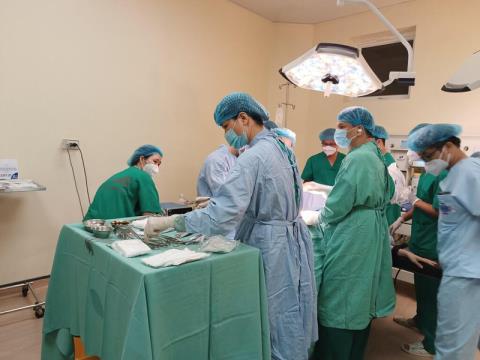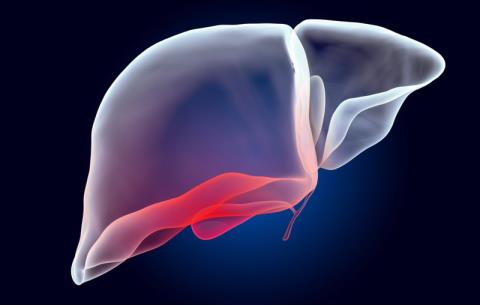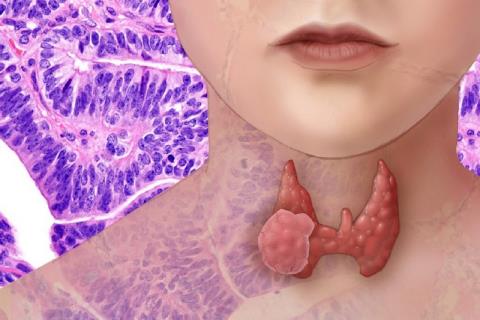Stem cell transplantation is an advanced medical method used to treat many different conditions. So what are the benefits of a stem cell transplant, how long does a stem cell transplant take? Please find out now!
Stem cell transplantation is a modern and effective method in the treatment of blood-related diseases and cancers including both benign and malignant diseases. Stem cell transplantation helps the patient's body restore its ability to produce blood and regenerate the immune system. So in what cases is stem cell transplantation commonly used? What methods of stem cell transplantation are there?
What is a stem cell transplant?
To restore the ability to regenerate blood and immune cells in the patient's body, blood stem cell transplantation is the standard method applied today. These hematopoietic stem cells can develop into any of the three types of blood cells: white blood cells, red blood cells, and platelets.
In cancer treatment, high doses of radiation or chemotherapy can cause serious damage to blood cells in the bone marrow. Therefore, stem cell transplant can be applied to restore the immune system for people with leukemia, myeloma, myeloma, myelodysplastic syndrome, blood cancer , ...
Stem cell transplantation is a modern treatment
Where do stem cells used for stem cell transplants come from?
Stem cell transplants can obtain cells from three main sources, including:
- Stem cells from bone marrow.
- Stem cells from peripheral blood.
- Stem cells from umbilical cord blood were collected after the baby was born.
The selection of stem cell source during transplantation plays an important role and directly affects the effectiveness of treatment. It is best to use stem cells from autologous sources or from relatives with the same bloodline to minimize the risk of cells being rejected and creating unwanted side effects for the patient.
Stem cells used in transplantation should be young, healthy and unaffected by the environment or age, for example stem cells from tissues and newborn umbilical cord blood . This type of stem cells is properly stored from the moment of birth and can be used to treat dangerous diseases in the future for the patient or blood relatives.
What are the benefits of a stem cell transplant?
Stem cell transplantation not only helps to treat diseases, but also opens up many potentials in the field of medical research and development:
- Living cells in the bone marrow are restored after bone marrow killing treatment to eliminate cancer cells in the patient's body.
- Abnormal bone marrow cells are replaced by normal bone marrow cells in cases of benign hematological disorders.
Stem cell transplants replace weak cells with healthy cells
Stem cell transplantation allows diseased cells to be replaced with healthy cells. Moreover, stem cells also have the ability to develop into different types of cells such as heart muscle cells, nerve cells, blood cells, etc. The formed cells can then be used to regenerate diseased tissues in the human body. This gives hope to people suffering from heart disease, stroke , osteoarthritis, burns, type 1 diabetes, Alzheimer's disease, amyotrophic lateral sclerosis.
Suggesting stem cell transplant methods
Stem cell transplantation is a method of infusing selected stem cells into the patient's body through an intravenous route. Stem cells will travel to the bone marrow and replace cells that have been damaged or destroyed by chemotherapy/ radiation . This process has three different methods:
- Autologous stem cell transplant: Stem cells are obtained from the patient's own peripheral blood or bone marrow.
- Allogeneic transplant, also known as cross-transplant: These stem cells are obtained from a donor, which may or may not be related to the patient's blood, but the cells must be compatible with the transplanted patient.
- Allogeneic transplant: The process of transplanting stem cells from a patient's twin.
Frequently asked questions about stem cell transplants
How long does a stem cell transplant take?
The stem cell transplant process takes more than 1 hour, including preparation, transplant implementation, and post-surgery check-up. And it can last at least a few months for patients with blood cancer.
The stem cell transplant process involves many steps
How dangerous is a stem cell transplant?
During allogeneic transplantation, some important problems such as graft-host disease can arise. This problem causes damage to the liver, intestines, and other organs in the body.
Not to mention, how this stem cell transplant can have a direct impact on the patient's psyche. Often, patients before the transplant will have extreme anxiety and stress. Therefore, it is important for patients to relieve some of their psychology before surgery by confiding in friends and relatives.
Which patients is the stem cell transplant method suitable for?
This approach is currently being used in the treatment of multiple myeloma, leukemia, and neuroblastoma.
Overall, stem cell transplantation is a huge step forward in the field of medicine and has saved many lives. However, to know exactly if they need to perform stem cell transplant, patients should visit and consult at trusted medical facilities and hospitals as soon as possible.







